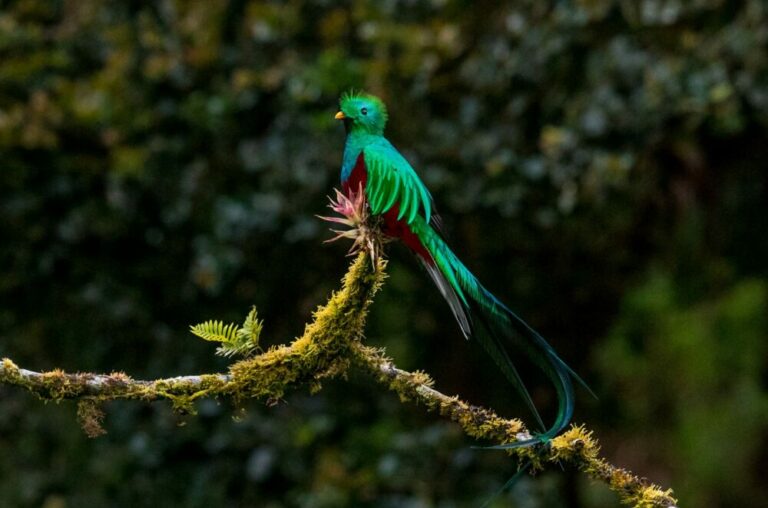What are the extent and causes of biodiversity loss?

What is the current state of biodiversity?
Today, Earth’s staggering biodiversity is in a state of crisis: species are disappearing faster than ever in human history. Globally, at least 1.2 million plant and animal species are estimated to be under threat of extinction, many of them before 2100. Some of the most threatened groups include amphibians, cycads and corals. Since the 16th century, at least 680 vertebrates and almost 600 plant species are documented to have gone extinct. Currently, species are disappearing 10 to 1,000 times faster than the normal ‘background’ rate of extinction. All this suggests that we have entered the ‘sixth mass extinction event’ – the first in Earth’s history to be driven primarily by human activity.
Extinctions are always preceded by declining populations and contractions in a species’ range. The World Wide Fund for Nature’s Living Planet Report 2022 documents a 69% average loss in the abundance of mammal, bird, reptile, fish and amphibian species since 1970. The populations of vertebrates living in freshwater ecosystems have declined even more, by 83% on average over the same period.
Trends in plants, fungi, and invertebrates such as insects (which make up over three-quarters of all animal species) are not as well known, but severe declines have been documented in some places. For example, in Germany, around 70% of plant species have declined since 1960s, while the weight of flying insects in protected has declined on average by more than 75% in less than three decades.
Most of the species losses seen in recent decades have been concentrated in low- and middle-income countries in the Global South, especially in Latin America. Recent losses in the Northern hemisphere have been less severe, but only because of the large declines in wildlife and natural ecosystems that have already taken place. The UK, for example, which experienced widespread destruction of habitats between the 17th and 19th centuries, is the most biodiversity-depleted country in the world.
What is driving the biodiversity crisis?
Direct and underlying drivers
Rapid industrialisation over the past two centuries has led to a significant increase in some of nature’s contributions to people, notably in food, fibre and fuel. However, this has come at the expense of nature’s other contributions, in particular ecosystems’ regulating functions such as pollination, flood control and climate regulation.
According to the recent Values Assessment report by the International Panel for Biodiversity and Ecosystem Services (IPBES), the underlying causes of the biodiversity crisis are strongly linked to a narrow focus on the materialistic values of nature in business and politics. This favours short-term profit and individual material gain over humanity’s other values for nature, including relationships with the natural world based on respect, reciprocity and sacredness, which are common to many indigenous cultures.
Habitat loss, degradation, fragmentation
Currently, biodiversity loss stems mainly from the loss, degradation and fragmentation of habitats. This is principally caused by the increasing encroachment of industrial activities and farming, fuelled by demand from high-consumption lifestyles in wealthy countries and rising consumption in low- and middle-income countries.
To date, 75% of ice-free land and 63% of oceans have already been transformed by humans in some way. Wetlands have suffered particularly extensive losses, with 85% of these habitats globally being destroyed by human activity. Tropical rainforests are another biome particularly badly affected by habitat destruction. For example, due to deforestation the Amazon Rainforest – the largest and most biodiverse rainforest on the planet – is hurtling towards a tipping point, beyond which vast swaths of the forest are expected to turn into dry, degraded savannahs. This will lead to staggering losses in biodiversity, carbon and the wellbeing of humans that depend on the forest’s ecosystem functions.
Climate change
The climate crisis is another leading cause of biodiversity loss and is expected to become the main driver as it intensifies. Climatic changes have already started to shift the distribution of biomes (major ecosystem types such as deserts and rainforests) and species ranges. Climate change is also negatively affecting the timing (‘phenology’) and synchronisation of ecological events like leaf budding, insect hatchings and egg-laying by birds, causing major disruption to species interactions.
One of the ecosystems most vulnerable to climate change are coral reefs, which are also the most biodiverse ecosystems on Earth, sustaining the livelihoods of 1 billion people. Up to 99% of coral reefs may disappear if global temperature rise is not kept below 1.5°C above pre-industrial levels. The Paris Agreement has the goal of limiting the global warming to 1.5°C but, under the current trajectory, the world is predicted to reach this threshold by the early 2030s.
Other human drivers: from overfishing to the spread of disease
Other important drivers of biodiversity loss include overfishing and overhunting, which are emptying the oceans and tropical forests of animals, especially the large species, and disrupting ecosystem functioning. Transport for trade and tourism are driving the spread of invasive alien species, which threaten the integrity of the ecosystems they invade. Growing demand for exotic species as food, pets and medicine is driving the illegal or unsustainable trade in many species of plants and animals.
International trade and habitat destruction are also fuelling the spread of diseases, threatening both wildlife and humans. For example, the chytrid fungus has wiped out 80% of global populations of more than 500 species of amphibians, 90 of which are presumed extinct as a result. Natural ecosystems are also being disrupted by various types of pollution, including from pesticides, fertilisers, plastics, and even light and noise pollution.

